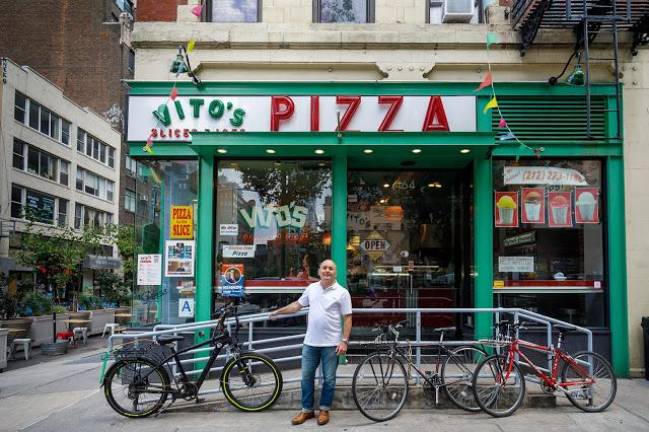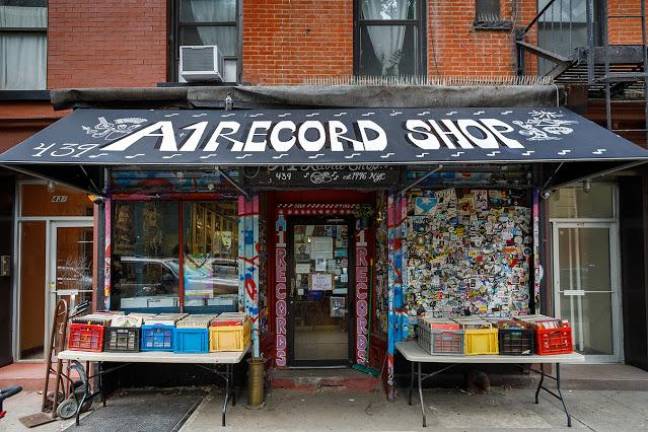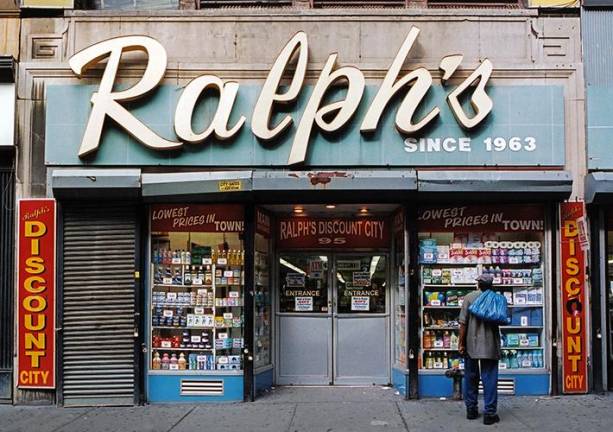Mom & Pops and James & Karla
Photographers James and Karla Murray are on a mission to save New York’s Mom and Pop shops



Talking to James and Karla Murray feels like speaking to two New York archivists. They’ve published two books of New York City storefronts, and their Instagram account @jamesandkarla, is filled with photographs documenting Mom and Pop businesses throughout the five boroughs to 70,000 followers.
Through COVID, their features kept businesses alive, drawing eyes to the storefronts of multi-generation-owned bakeries and neighborhood pizzerias alike. Living in the East Village together since the 1980s, James and Karla Murray started photographing storefronts as a way to document the old-fashioned aesthetics of some of their favorite places in the city before they disappeared. This morphed into personal connections with the owners, the patrons and their own neighborhood. Speaking with them now, they shared what it’s been like to witness New York change through the lens of a camera.
How did you meet and start photographing together?
Karla: I grew up in the Bronx, and James grew up in Bridgeport, Connecticut. We met in the Lower East Side in the 1980s, working three different jobs each to afford our first apartment together. Photos were a hobby at first, but after a while we both decided to make the jump, and become photographers.
Were you early users of Instagram, or did the account come later?
Karla: We definitely were not early connoisseurs. Our first book of storefronts was released in January of 2009, and that was all 35mm film pictures. We had some social media accounts to share our photos, like a Flickr account, but for the most part we weren’t sharing most of our photos on the internet, out of concerns that maybe they’d get stolen or plagiarized. In 2014, we made our Instagram account, and we realised that we could reach so many more people with it than our book could.
Why was that important?
Karla: Our original goal in taking these photos was to document and preserve the old, classic storefronts of New York City. We loved living in the East Village because it had everything we loved; the small stores, the clubs, the pizzerias. We loved them, and we thought that they were an integral part of the community. And we realized that with a book, only a finite amount of people are reading it and seeing the stores, but if more people were able to see them, then more people would support smaller stores, maybe even go looking for stores in their own communities outside of New York.
Do you remember the first photo you posted on your account?
Karla: I think it was of Ralph’s, it was the cover of our first book. It was one of those everything stores, you could get literally anything you wanted. We were originally attracted to the store because of the actual aesthetics of the store front, the font, the design. But it was also personal, because I shopped there all the time.
What’s your process like, are businesses approaching you to be featured?
Karla: We feature whatever businesses we’re interested in, but businesses will reach out to us too because we do this all for free, we don’t charge to take photos of the businesses, and they’ve seen that other businesses were helped when we featured them.
Has COVID changed your process at all?
Karla: We definitely helped out a couple businesses during COVID. It was crazy to watch; after the pandemic began the East Village just emptied out, there was literally no one on the streets. We wanted to highlight businesses to help them get through such a hard time. On the day that the lockdown was announced we were at East Village Pizza, and the owner and ourselves literally watched the streets empty out. The tables were stacked against the walls, he was getting ready to start doing only take out and delivery options.
How does this period compare to other periods that you’ve photographed in New York?
Karla: We stayed in New York through the entire pandemic, and in my life, I’ve never seen it like that. Completely empty. No one on the streets. We would walk through the city to go photograph, we still took photographs throughout the pandemic but only went as far as we could walk there and back, and we noticed full shopping corridors had cleared out. Even the big stores and storefronts were empty, and we thought, if these are the big guys, how are the little guys going to do?
James: After 9/11 there was a kind of defiance in the city, an attitude of unity. But with the pandemic, no one knew what was coming. Business owners literally had no idea if they were going to stay afloat. We realized that Instagram could be even more important in getting people’s attention to businesses that were struggling. Especially for businesses that might not have an online presence, getting eyes on their businesses during the pandemic through social media made it even more meaningful.
Do you think New York is dead? How are you feeling about the future of businesses like the ones you photograph?
Karla: We’re optimists by nature, more glass half full than half empty. New York is coming back. It’s not going to come back overnight, and it might not be the same, but there’s always going to be something new. We’ve seen three pizza places open during the pandemic. For someone maybe this means that a storefront will open and they’ll be able to start the business they always wanted. Maybe they’ll get that opportunity.
James: It’s not dead. It won’t die. We’re not going anywhere, as people that have been here for decades, and we’ll make it work, no matter what. That’s New Yorkers.